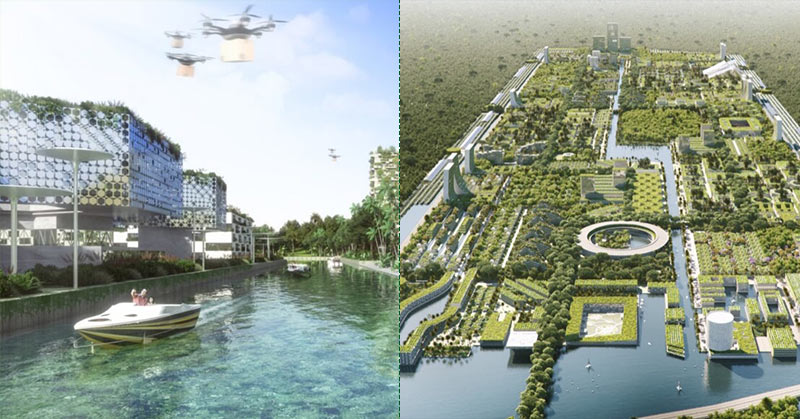The climate is changing rapidly and globally we are scrambling to respond. In the last decade, the human race has been forced to look at ourselves critically and realize that the way we live and our daily habits are having a devastating impact on the health of our own planet.
Thankfully, it is not too late. We can make a difference, we can slow down and even reverse many of the effects of global warming, as long as we are willing to put in a little creativity and a lot of work. Businesses and corporations hold some of the most power in terms of turning the tide on climate change, and many are beginning to change their practices for the betterment of the earth.
This is where Milan-based architecture firm Stefano Boeri Architetti saw an opportunity: To design a city that is completely self-sustaining and isn’t just ‘not bad’ for the environment but is actively working to fight back against climate change.

The First Smart-Forest City: Cancun
Imagine a city that has all of the comforts of living in a big city but without the noise, pollution, gridlock, and has way more plants and vegetation.
This is what Stefano Boeri Architetti (SBA) has designed to be built on a 557-hectare plot of land currently used as a sand quarry for hotels in Cancun, Mexico. (1) It will not only re-forest the entire area but will also create space for a mixed-use development that would be completely self-sufficient for food and energy.

For people and plants alike
The proposed design plans to accommodate 130,000 residents and 7,500,000 plants of 400 species. Not only will there be a ratio of over two trees per person, but there will also be plenty of other plants, green roofs, and vertical gardens. (1)
Solar Powered city
As with all climate change initiatives, no great feat such as this can be accomplished alone. This is why SBA has teamed up with German solar energy company Transsolar to make use of one of Mexico’s most abundant commodities: sunshine.
The area will be surrounded by a ring of solar panels that will power the entire city, with no coal of fossil fuel energy whatsoever being used.
Irrigation will happen using underwater pipes that will collect water from the ocean, put it through a desalination tower, and then be piped throughout the city.
No cars for the forest city
Approximately 15% of global man-made carbon dioxide emissions come from transportation. (2) The Smart Forest City: Cancun aims to eliminate that by not having traditional cars inside their city limits. Parking for such vehicles will be available on the outskirts of the city from where visitors can leave their car and switch to the Mobility in Chain (MIC) system which will provide electric and semi-automatic cars to visitors and residents.
A hub for innovation
Sustainable urbanism is the future of urban living, and the Smart City will be a testing site for this style of future development. There will be a research center for sustainable development, environmental issues, and climate change response. This center will be a place where international meetings can take place and researchers from across the globe can come to test new theories and develop new products.
What makes this city so important
This city is important for the survival of the earth for more reasons than just been a net-zero carbon emissions city and reforesting an area that was otherwise bare. The Smart Forest City in Cancun is an example of how, with some creativity and the willingness to change, we can live more sustainably. Sure, there are still many aspects of life in this city that will need to be addressed, and completely tearing down every city in the world to rebuild them this way is not feasible. What can happen, however, are small changes over time that make our current cities more self-sufficient and environmentally friendly.
These are things like:
- Switching to renewable energy from coal and fossil fuel
- Using electric cars and taking public transportation more often
- Installing “green roofs” and using vertical gardening
- Changing our agricultural practices to more sustainable ones
- Planting as many city gardens as possible
There are plenty more things cities can do to be more sustainable, these are just a few examples. We can all make our everyday lives more sustainable, too.
The biggest thing to remember is this: Reversing climate change won’t happen from a few people doing sustainably perfectly, but from everyone doing sustainability imperfectly.
Have tricks you use at home to live more sustainably? Let us know in the comments!

